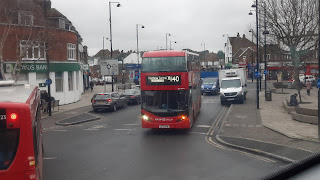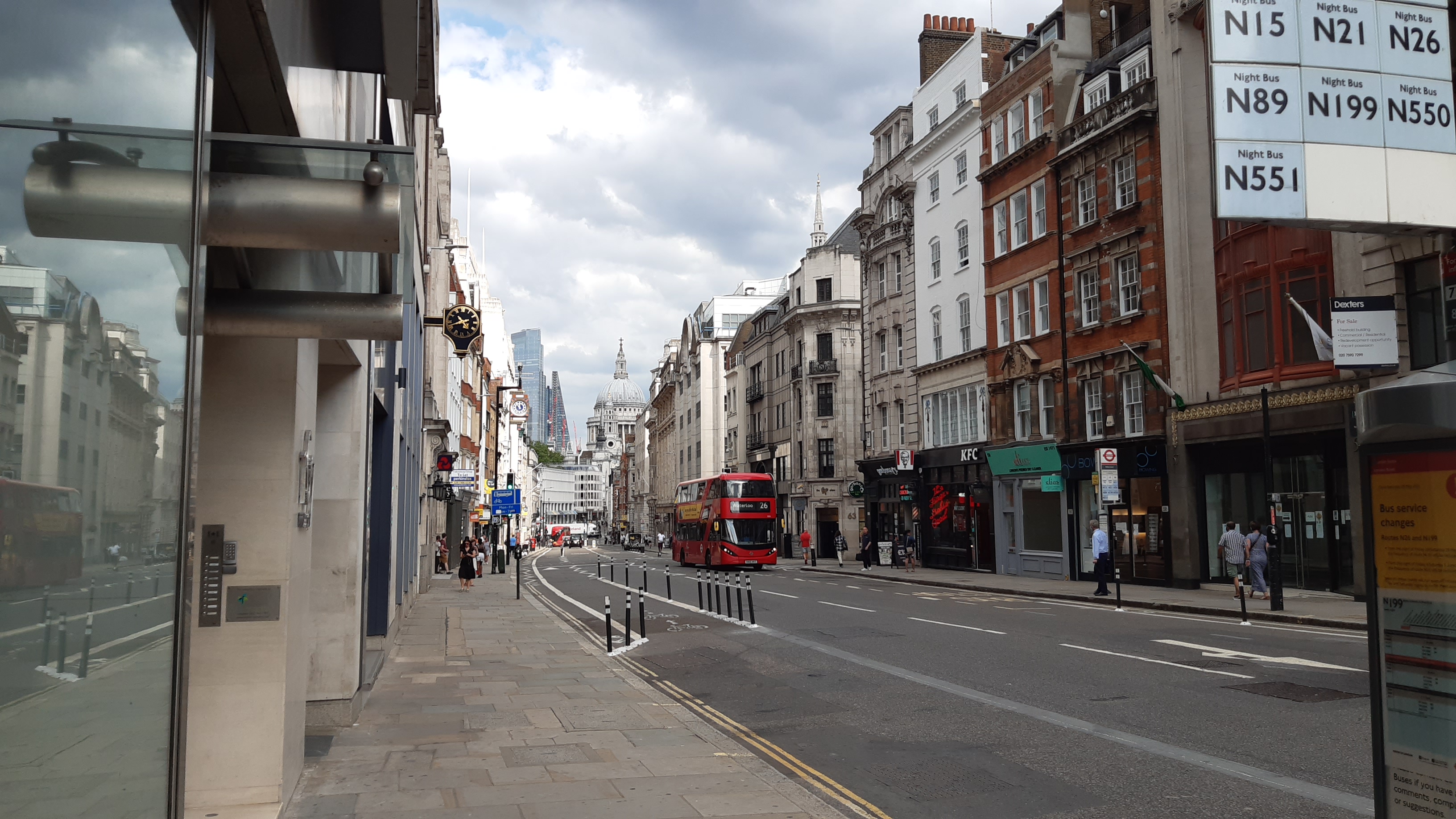All the Modes of Transport Operated by TfL
TfL is a massive establishment which controls many different modes of transport in London including some obscure operations like streets and dial-a-ride.
Buses

TfL operates almost all of the buses in London with them controlling and tendering contracts for each individual route. The operators have some control in the services run like the seat moquette and type of bus. But TfL, in order to keep a consistent image, forces the buses to be; painted red, have various disability improvements (including the onboard displays), the cost being the same (currently £1.55), what types of payments to accept (like not accepting cash), and the frequency of service. London Buses, the subsidiary of TfL, also manages the physical bus stops with them maintaining and updating the locations. Additionally London Buses also manages a handful of Bus Stations around London.
Coaches
This is mostly limited to the operation of Victoria Coach Station, the Central London terminal of many coach trips in the UK and beyond. Coaches also provide information about London's roads to coach drivers.
Cycles

Cycles is split into two parts, with the first constructing and managing the cycling infrastructure in London, and the other being a bike hire scheme. The higher scheme called Santander Cycles (or Boris Bikes, named after the then Mayor of London and now Prime Minister Boris Johnson) provides bikes and docking stations for Central London. These are widely used by many people with London on its way to becoming a cycling city like the whole of the Netherlands.
Dial-a-Ride
Dial-a-Ride is a relatively unknown but vital service for many. Providing door-to-door transport for those who have a long term disability and those who would be unable to use public transport. This service is provided in bright red minibuses and is free. Whilst not a direct taxi, the conversations while travelling are vital to the users of Dial-a-Ride with it also providing a lifeline for so many elderly and disabled people.
Docklands Light Railway

The DLR is a driverless railway operating in the Docklands. The DLR is also completely step free meaning it is very accessible for everyone. It has been completely automated since it first opened in 1987 and has had many extensions to its network. These extensions mean that the DLR now spans from Bank in the City to Stratford for Westfield and Olympic Park, Greenwich for the Meridian, and London City Airport.
Elizabeth Line

The Elizabeth Line is not part of the underground but is actually its own separate railway. Opening in the first half of 2022 it incorporates existing railways to the east and west (currently branded as TfL rail) and a brand new underground behemoth of a system underneath Central London. The Elizabeth Line was originally called Crossrail and carried that name through various proposals since at least the 1990s. But the name changed to the Elizabeth Line in 2016 when the then Mayor Boris Johnson and the Queen unveiled the new name from Bond Street station.
Emirates Airline

Opened in 2012 just before the London Olympics the Emirates Airline spans the River Thames between North Greenwich and the O2 in the south and Royal Victoria in the North for the Excel Centre and the Crystal (the new home of the Mayor Of London). At a maximum height of 90 metres the cable car seems like it has been built far too tall. This is partly true as it is ridiculously high but the height was needed to not further limit the maximum height of boats into London, with the current limits being the QEII bridge and Tower Bridge.
Overground
The London Overground opened in 2007 taking over the Silverlink Metro services on the North London and Watford DC Lines. Since it first opened the Overground has expanded massively with it currently having many different lines in various parts of London and a total of 112 stations. Soon the Overground will gain an additional station at Barking Riverside with the extension and new station currently being under construction. Like the Underground (before the Pandemic) part of the Overground (specifically the East London Line) ran overnight on Friday and Saturday nights providing invaluable links at all times of the day.
River

Operates the piers served by Thames Clippers and licences river passenger services. River is also related in the operation of Thames Clippers by Uber Boat (formerly MBNA) allowing Oyster and Contactless to be used on its services between Putney in the East and Woolwich (soon to be Barking Riverside) in the west. Interestingly these boats are the only TfL operated transport that has onboard toilets.
Street
TfL also operates and maintains many of London’s roads with them mostly including the more major and strategic roads. TfL as a public transport company also tries to reduce traffic, congestion, and emissions with this done using three different schemes: the Congestion Charge, the LEZ (low emission zone), and the ULEZ (ultra low emission zone). The Congestion Charge operates in Central London and charges everyone driving (with residents charged less) a daily fee of £15. The ULEZ spans between the North and South Circular and charges drivers of highly emitting vehicles a £12.50 fee per day to improve London’s air quality. The LEZ operates in virtually all of Greater London and charges either £100 or £300 a day for highly emitting large vehicles.
Taxi and Private Hire
London has an army of Black Cabs with drivers who are famous for completing The Knowledge. The Knowledge is run by TfL and gives the drivers an encyclopaedic knowledge of London, this is because taxis can be hired from anywhere and take you anywhere in London. TfL is also the licensor for taxis and private hire vehicles with it trying to maintain a safe experience for everyone using taxis and private hire vehicles in London.
TfL Rail
Soon to disappear, TfL Rail currently operates the above ground sections of what will become the Elizabeth Line. Starting operations in the east (Liverpool Street to Shenfield) in 2015 and then in the west, replacing the Heathrow Connect services, in 2018. TfL rail in the west now stretches all the way to Reading (more than 35 miles from Trafalgar Square) which makes it the furthest any TfL operated service gets from London.
Trams

The trams opened in 2000 with them serving Croydon and stretches between Beckenham, New Addington and Wimbledon. The Trams have a mixture of on-street running around Croydon (with even a bit of running across a pedestrianised shopping street) and off-street running. When running on rails the Trams are capable of a top speed of 50 mph with the speed limit signs set in km/h. The Trams were constructed using a few underused or abandoned sections of railway with the successful aim of increasing passengers with there now being just under 30 million passengers a year.
Underground

Despite being last alphabetically the Underground is TfL’s most recognisable service with 11 lines. The Underground is the oldest TfL service and has had a long varied history with the first part opening in 1863 over 100 years before TfL’s own creation in 2000. The Underground has 272 stations with two recently added in the Northern Line Extension which opened in 2021. Whilst the Underground looks unified it has been created from many different, previously competing, railways this means that there are two different train sizes and the signalling systems on each line are significantly different and incompatible.



Comments
Post a Comment